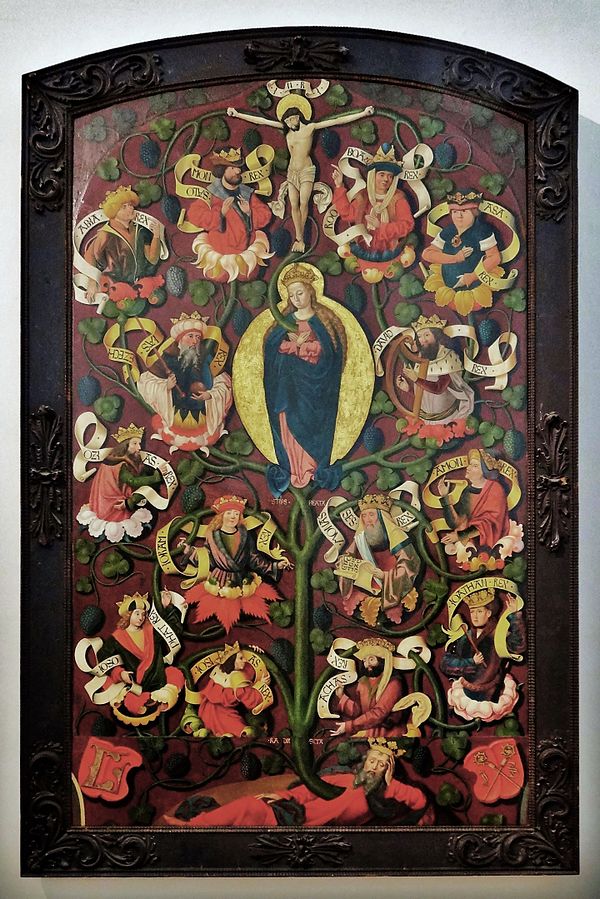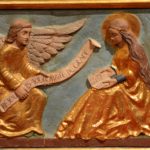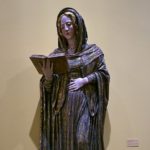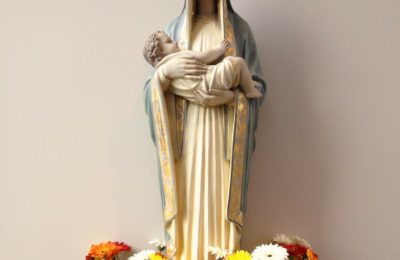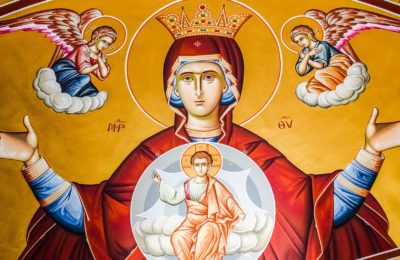“Lo, how a rose e’er blooming,
From tender stem hath sprung.
Of Jesse’s lineage coming,
As men of old have sung;
It came, a flow’ret bright,
Amid the cold of winter,
When half spent was the night
Isaiah ’twas foretold it,
The Rose I have in mind,
With Mary we behold it,
The virgin mother kind;
To show God’s love aright,
She bore to men a Savior,
When half spent was the night
O Flower, whose fragrance tender
With sweetness fills the air,
Dispel with glorious splendour
The darkness everywhere;
True man, yet very God,
From Sin and death now save us,
And share our every load.” (source)
(source of music)
Today is the solemnity of the Immaculate Conception, a day of happiness in the Church. Yes, a rose has bloomed amidst the cold of winter as written in the poem/hymn, Lo How a Rose E’er Blooming. The following is a brief history of this hymn:
“Es ist ein Ros entsprungen” (lit., “A rose has sprung up”), is a Christmas carol and Marian Hymn of German origin. It is most commonly translated in English as “Lo, how a rose e’er blooming“, and is sometimes known as “A Spotless Rose” or “Behold a Rose of Judah“. The rose in the text is a symbolic reference to the Virgin Mary, and the hymn makes reference to the Old Testament prophecies of Isaiah which in Christian interpretation foretell the Incarnation of Christ, and to the Tree of Jesse, a traditional symbol of the lineage of Jesus. Because of its prophetic theme, the song is popular during the Christian season of Advent.[1][2]
The hymn has its roots in an unknown author prior to the 17th century. It first appeared in print in 1599 and has since been published with a varying number of verses and in several different translations. It is most commonly sung to a melody which was harmonized by the German composer Michael Praetorius in 1609.[1]
…The hymn evokes the symbolic use of the rose to describe Mary sprouting from the Tree of Jesse as the Mother of God…The hymn was originally written with two verses, which express the fulfilment of the prophecy of Isaiah, foretelling the birth of Jesus. It emphasizes the royal genealogy of Jesus and Christian messianic prophecies. The first verse describes a rose sprouting from the stem of the Tree of Jesse, a symbolic device that depicts the descent of Jesus from Jesse of Bethlehem, the father of King David. The image was especially popular in medieval times and it features in many works of religious art from the period. It has its origin in the Book of Isaiah:[1]
And there shall come forth a rod out of the stem of Jesse, and a Branch shall grow out of his roots.
The second verse of the hymns, written in the first person, then explains to the listener the meaning of this symbolism: that Mary, the mother of Jesus, is the rose that has sprung up to bring forth a child, who is represented as a small flower (“das Blümlein”). The text affirms that Mary is a “pure maiden” (“die reine Magd”), emphasising the doctrine of the Virgin birth of Jesus.
Since the 19th century other verses have been added, in German and in translation.” (source)
May you have a celebratory day for amidst the cold of winter, a rose has bloomed.

A family celebration for the Solemnity of the Immaculate Conception, 2019.
Hail, Immaculate Conception!
~SCF
~Top image: “Mary sprouting from the Tree of Jesse as the Mother of God (altarpiece, St. Lambrecht’s Abbey)”, source of image and image description (text).

